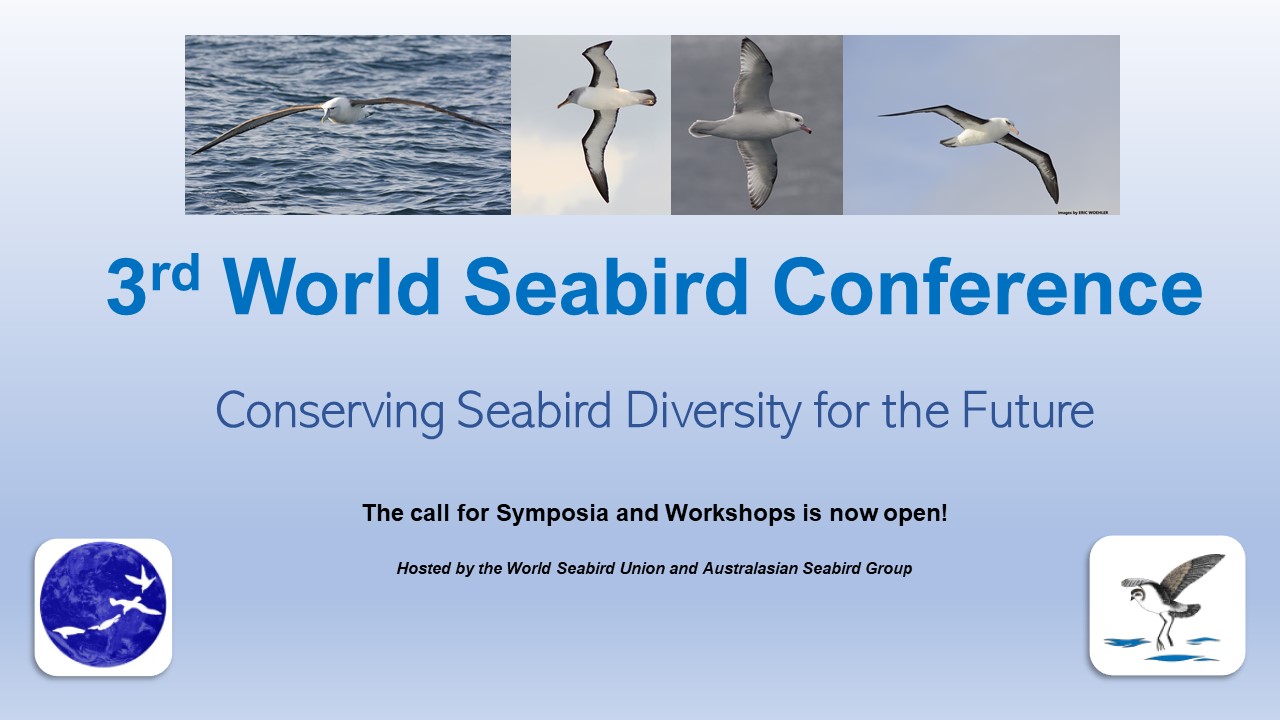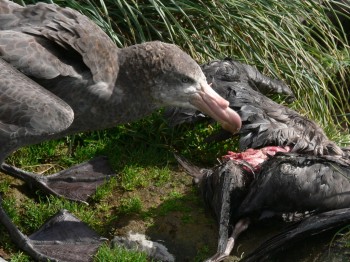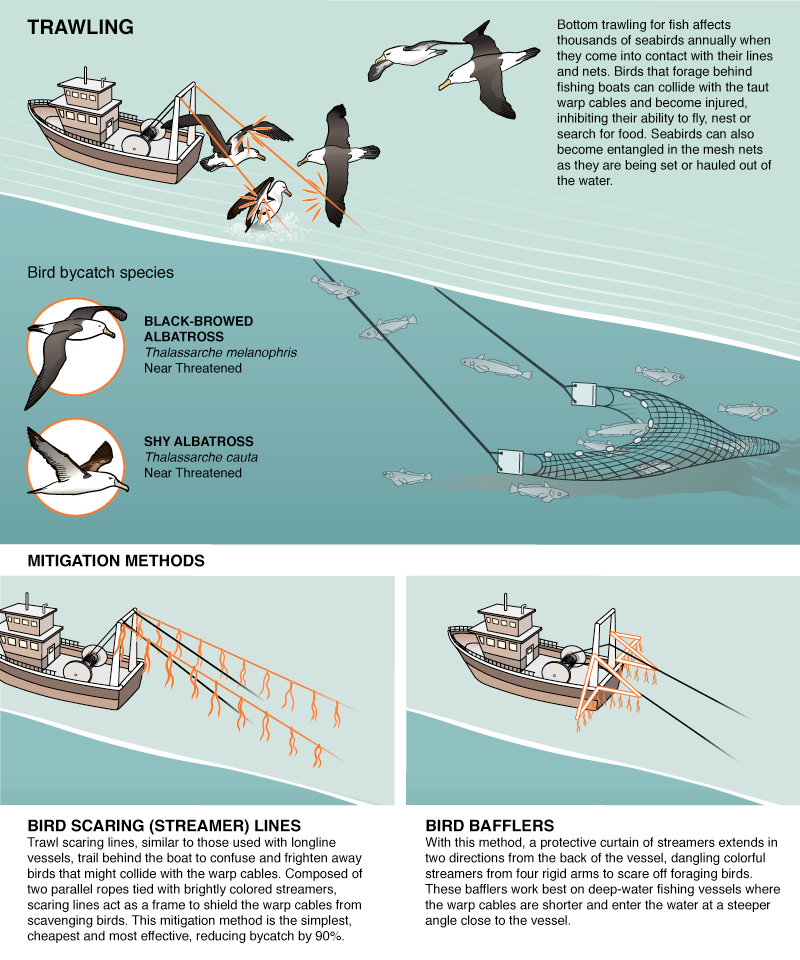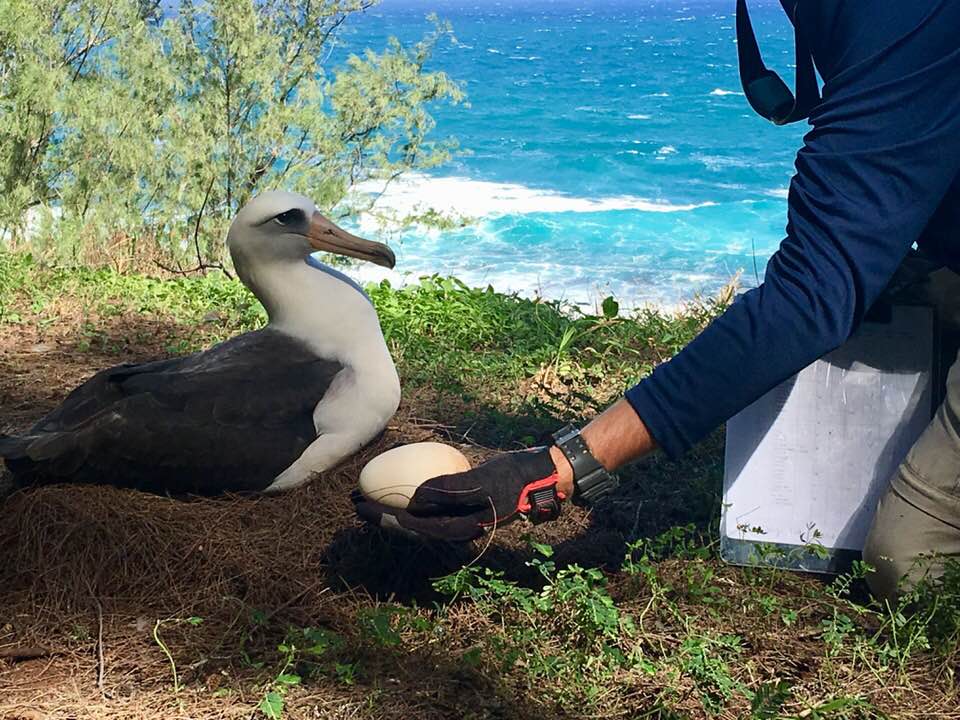From time to time, ACAP Latest News has featured the role of albatrosses and petrels in literature and in the visual and aural arts. Visual art works covered have included public statues around the world, as well as oil and water-colour paintings (often appearing on postage stamps). Musical arts have been covered with Fleetwood Mac’s haunting guitar instrumental Albatross. Albatrosses, more than petrels, have appeared in some well-known poems by such as Samuel Taylor Coleridge, Pablo Neruda and Charles Baudelaire. Albatross poems featured in ALN have appeared in several languages: English, French and Spanish – coincidentally ACAP’s three official languages – as well as in Hawaiian.
ALN’s thinking is that artistic endeavours of these types can often strike a chord with the general public for a conservation cause more easily than can dry scientific writing - appealing to the heart as well as to the head.
Pleasing then to be able to get in touch with two USA-based artists, poet Hannah Fries and painter Sara Parrilli, who have collaborated on a suite of illustrated poems that address the plight of albatrosses in the North Pacific. They write on-line:
“This collaboration began with a film clip: a trailer for the forthcoming film Albatross (now available to the public in its finished form), written and directed by artist Chris Jordan. It is one of those works of art that combines so much grief with so much beauty that looking away from it feels impossible. In this case, the story is about a remote island in the Pacific, the beautiful Laysan albatross, and the horrifying effects of the plastic that makes its way to the ocean and, carried by currents, gathers in a mind-bogglingly vast garbage patch.”
Here is just one of the collaborations from their Albatross project:
Albatross at the Great Pacific Garbage Patch - by Hannah Fries
Because hunger
Because life
Because squid and bottle caps and bags
Because pervasive
Because what is not needed passes through
Because salt our companion
Because solitude
Because the egg cracks open the chick cries out a thousand miles away
Because our ancestors
Because the wind that brings us
Because glide
Because dive
Because when has anything not been food to someone
Because now
Because here
Because the sea is our body is the world inside us
Because how will we recognize the end
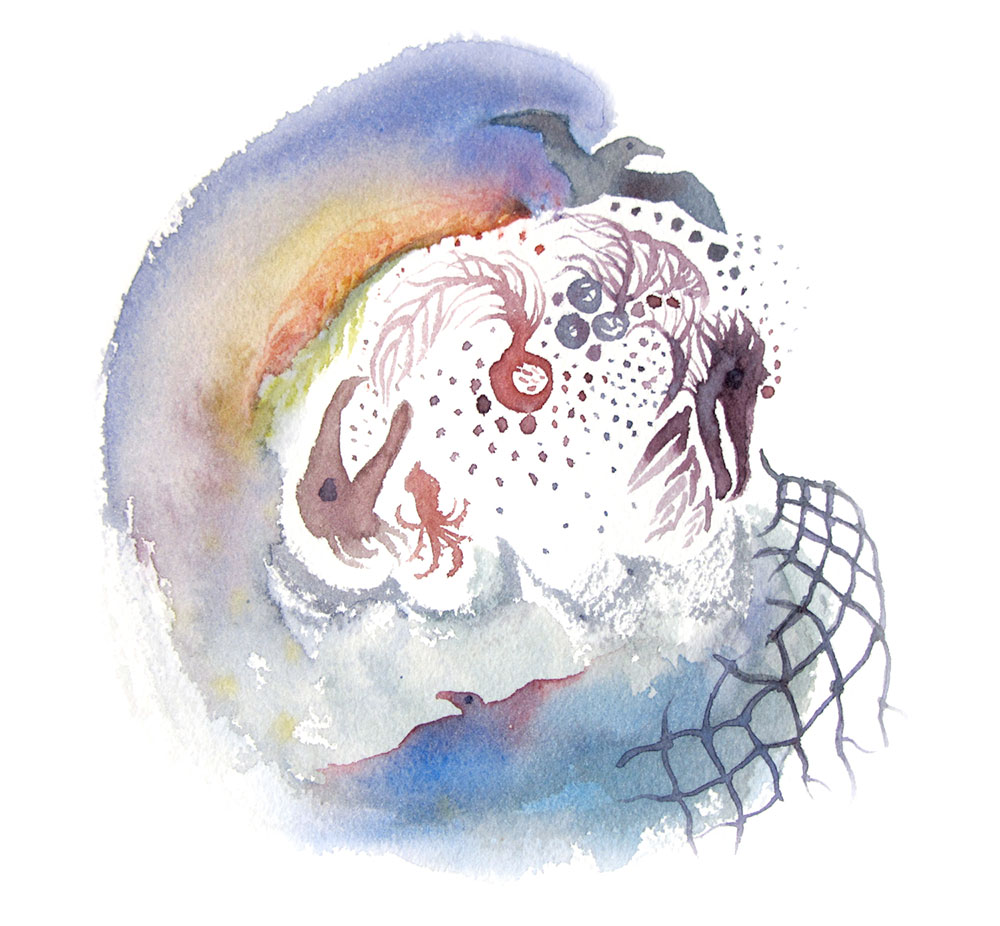
Albatross at the Great Pacific Garbage Patch by Sara Parrilli
See more works from their project here. Future postings will feature more of Hannah’s and Sara’s collaboration.
With thanks to Hannah Fries and Sara Parrilli.
John Cooper, ACAP Information Officer, 24 January 2019

 English
English  Français
Français  Español
Español 